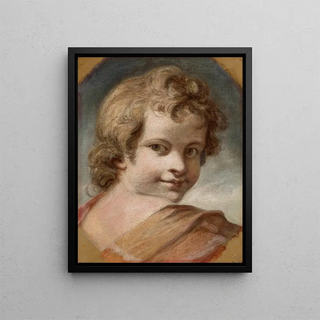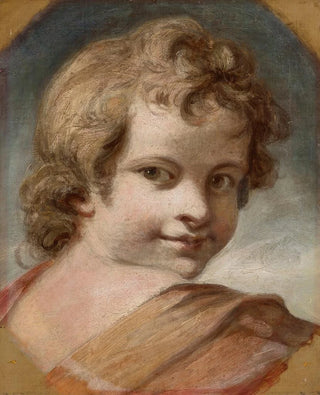Art print | Head of a Boy - Sir Joshua Reynolds


View from behind

Frame (optional)
In the world of art, some works transcend their era to become timeless icons. "Head of a Boy" by Sir Joshua Reynolds is one of those creations that capture the very essence of youth and innocence. This piece, crafted by one of the greatest portraitists of the 18th century, immerses us in a universe where every brushstroke tells a story. Reynolds's ability to seize the expression of a child, with such delicacy and depth, invites the viewer to contemplate not only the face of this boy but also the emotions that dwell within. By admiring this art print, one is transported to a time when art was not only a means of expression but also a reflection of society.
Style and uniqueness of the work
Reynolds's style is distinguished by its ability to combine realism and idealization. In "Head of a Boy," the artist uses a palette of soft and luminous colors that highlight the gentleness of the child's features. The delicate shadows and subtle light caressing the face create an almost ethereal atmosphere, enhancing the impression of vulnerability and purity. Every detail, from the sparkling gaze to the slightly tousled hair strands, is carefully studied. This meticulous attention to detail, coupled with a harmonious composition, gives rise to a work that seems to vibrate with a life of its own. Reynolds does not merely reproduce the appearance of his subject; he seeks to capture the very soul of the child, to immortalize a fleeting moment of innocence.
The artist and his influence
Sir Joshua Reynolds, an emblematic figure of British portraiture, knew how to mark his era with his innovative approach and technical mastery. As the first president of the Royal Academy of Arts, he played a decisive role in the evolution of art in the 18th century. His influence extends far beyond his works, as he also trained and inspired many artists of his time. Reynolds managed to integrate elements of classical painting while adapting them to his own style, thus creating a bridge between the past and the present. His commitment to art and his desire to make beauty accessible through

Matte finish

View from behind

Frame (optional)
In the world of art, some works transcend their era to become timeless icons. "Head of a Boy" by Sir Joshua Reynolds is one of those creations that capture the very essence of youth and innocence. This piece, crafted by one of the greatest portraitists of the 18th century, immerses us in a universe where every brushstroke tells a story. Reynolds's ability to seize the expression of a child, with such delicacy and depth, invites the viewer to contemplate not only the face of this boy but also the emotions that dwell within. By admiring this art print, one is transported to a time when art was not only a means of expression but also a reflection of society.
Style and uniqueness of the work
Reynolds's style is distinguished by its ability to combine realism and idealization. In "Head of a Boy," the artist uses a palette of soft and luminous colors that highlight the gentleness of the child's features. The delicate shadows and subtle light caressing the face create an almost ethereal atmosphere, enhancing the impression of vulnerability and purity. Every detail, from the sparkling gaze to the slightly tousled hair strands, is carefully studied. This meticulous attention to detail, coupled with a harmonious composition, gives rise to a work that seems to vibrate with a life of its own. Reynolds does not merely reproduce the appearance of his subject; he seeks to capture the very soul of the child, to immortalize a fleeting moment of innocence.
The artist and his influence
Sir Joshua Reynolds, an emblematic figure of British portraiture, knew how to mark his era with his innovative approach and technical mastery. As the first president of the Royal Academy of Arts, he played a decisive role in the evolution of art in the 18th century. His influence extends far beyond his works, as he also trained and inspired many artists of his time. Reynolds managed to integrate elements of classical painting while adapting them to his own style, thus creating a bridge between the past and the present. His commitment to art and his desire to make beauty accessible through






